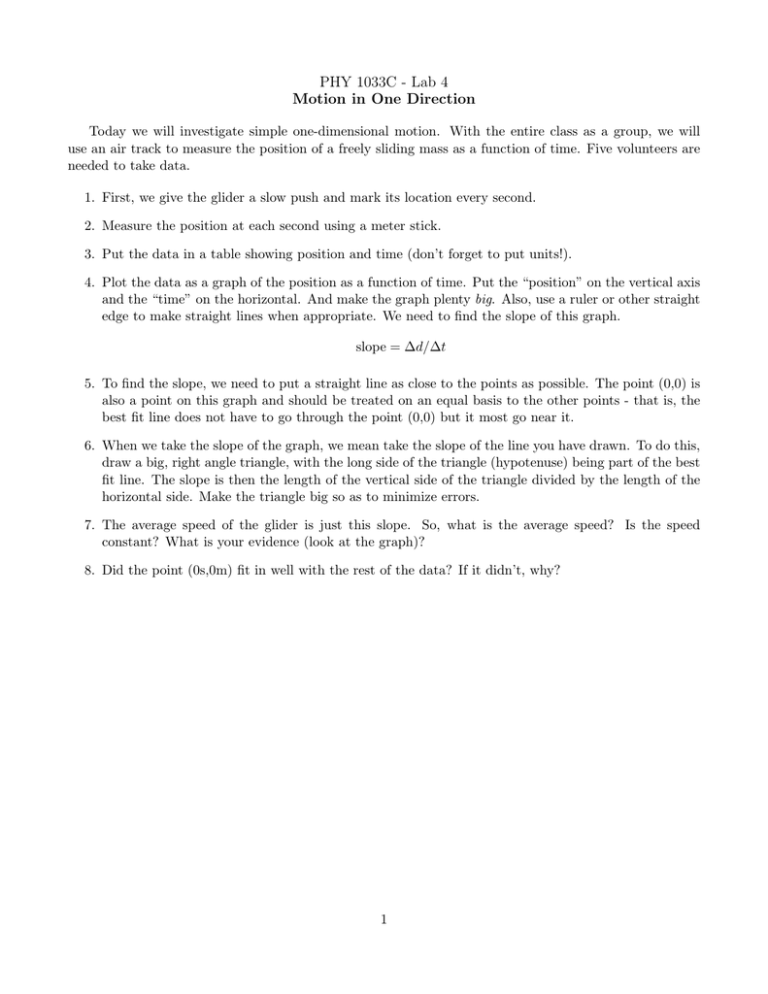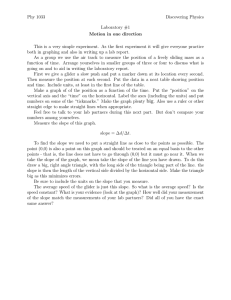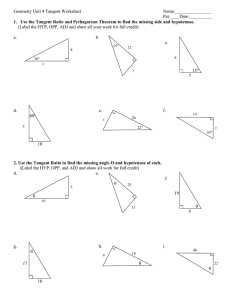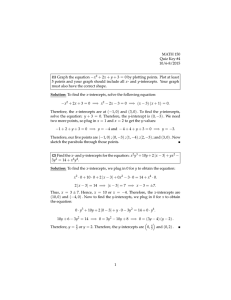PHY 1033C - Lab 4 Motion in One Direction
advertisement

PHY 1033C - Lab 4 Motion in One Direction Today we will investigate simple one-dimensional motion. With the entire class as a group, we will use an air track to measure the position of a freely sliding mass as a function of time. Five volunteers are needed to take data. 1. First, we give the glider a slow push and mark its location every second. 2. Measure the position at each second using a meter stick. 3. Put the data in a table showing position and time (don’t forget to put units!). 4. Plot the data as a graph of the position as a function of time. Put the “position” on the vertical axis and the “time” on the horizontal. And make the graph plenty big. Also, use a ruler or other straight edge to make straight lines when appropriate. We need to find the slope of this graph. slope = ∆d/∆t 5. To find the slope, we need to put a straight line as close to the points as possible. The point (0,0) is also a point on this graph and should be treated on an equal basis to the other points - that is, the best fit line does not have to go through the point (0,0) but it most go near it. 6. When we take the slope of the graph, we mean take the slope of the line you have drawn. To do this, draw a big, right angle triangle, with the long side of the triangle (hypotenuse) being part of the best fit line. The slope is then the length of the vertical side of the triangle divided by the length of the horizontal side. Make the triangle big so as to minimize errors. 7. The average speed of the glider is just this slope. So, what is the average speed? Is the speed constant? What is your evidence (look at the graph)? 8. Did the point (0s,0m) fit in well with the rest of the data? If it didn’t, why? 1







